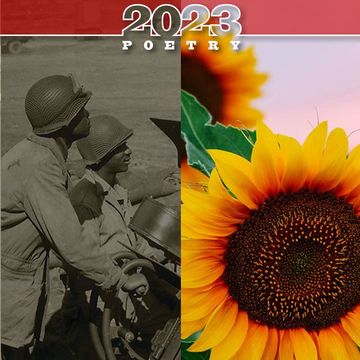This year, the California Book Club boasted a dozen new award-winning authors—and celebrated its first three years. Genres presented included historical fiction, poetry, science fiction, and literary nonfiction (such as memoirs). And we even featured our very first work of graphic literature, Jaime Hernandez’s collection of comics Maggie the Mechanic. Each of the 12 titles, carefully chosen by our selection panel, is an emblem of what California literature is all about. They were written to inform readers and to spark conversations, and they did just that. Every month, Alta Journal published creative essays that examined lesser-known aspects of each book or shed new light on an old idea. Below are just some of our favorite essays from this year, one for each month’s selection. If these pique your interest, dig in! There’s a link to the full event below.
JANUARY: MAGGIE THE MECHANIC, BY JAIME HERNANDEZ
Gary Groth, editor-in-chief of the Comics Journal, shares when he first learned of Gilbert and Jaime Hernandez (otherwise known as Los Bros Hernandez). Back when comics weren’t as sought-after, the Hernandez brothers were diligently crafting what would one day explode among graphic novel enthusiasts: the widely known Love and Rockets.
FEBRUARY: LESS, BY ANDREW SEAN GREER
Less is a novel that does not end once the protagonist grows up—for very good reason, since the protagonist starts out as a middle-aged man. In this beautiful essay, Anna E. Clark explores how Andrew Sean Greer tackles the typical bildungsroman and makes it his own.
MARCH: THE HOUSE OF THE SPIRITS, BY ISABEL ALLENDE
Carolina De Robertis is only one of the many Latina women who have been inspired and motivated by the book club’s March author, Isabel Allende. De Robertis reflects on meeting Allende for the first time and the impact it had on her writing.
APRIL: CITIZEN, BY CLAUDIA RANKINE
Claudia Rankine uses various mediums in Citizen to encapsulate how race relates to everything in the world around us. Steffan Triplett’s essay analyzes specific word choices and metaphors that might have evaded first-time readers of the book.
MAY: TELEPHONE, BY PERCIVAL EVERETT
We featured Percival Everett’s Telephone in May, but for those curious about Everett’s previous works, Nadifa Mohamed breaks them down. She examines how Everett treats race and reality across his Dr. No, The Trees, and Erasure.
JUNE: INTERIOR CHINATOWN, BY CHARLES YU
A book written like a screenplay, with metaphors and symbolism abounding on each page, can be difficult to digest, but Lillian Howan’s essay will help you along the way. She analyzes the core of Charles Yu’s book, examining the reality the characters live in, as well as their consciousness.
JULY: STAY TRUE, BY HUA HSU
After reading Hua Hsu’s Pulitzer Prize–winning memoir, Stay True, it’s normal to want to learn more about the author. In his essay, David Woo outlines how Hsu evolved from a student at Berkeley into a well-known culture critic at the New Yorker.
AUGUST: CLARK AND DIVISION, BY NAOMI HIRAHARA
The protagonist of this novel is a Japanese American internment camp detainee during World War II, so it’s fitting that Kimiko Guthrie, daughter of a detainee, share her family’s story. She recounts the resilience of her mother, who, along with her family, demanded reparations in the 1980s.
SEPTEMBER: BAD MEXICANS, BY KELLY LYTLE HERNÁNDEZ
Bad Mexicans, by Kelly Lytle Hernández, is an incredible work of scholarship, and Walton Muyumba’s essay serves to highlight that. He examines the movement at the core of the book and points out connections between Mexican history and global history.
OCTOBER: THE CANDY HOUSE, BY JENNIFER EGAN
Priscilla Gilman takes it upon herself to find a place for Jennifer Egan’s The Candy House among the Pulitzer Prize–winning author’s other works. She highlights the themes of memory and technology throughout five of Egan’s previous novels and cross-references characters and motifs.
NOVEMBER: BAD INDIANS, BY DEBORAH A. MIRANDA
David Heska Wanbli Weiden interviews Deborah A. Miranda. They discuss the “Mission Project,” Miranda’s childhood and her complicated relationship with her father, and the change in tribal attitudes in the 10 years since the book’s first publication.
DECEMBER: EAT THE MOUTH THAT FEEDS YOU, BY CARRIBEAN FRAGOZA
Carribean Fragoza’s gothic and, at times, grotesque descriptions within this collection of short stories describe motherhood in a way not easy to achieve. Layla Benitez-James reflects on Fragoza’s metaphors and recalls her own experiences with motherhood.
























